Veddas tribe tour
One day tour to Veddas tribe

Visiting veddas tribe of Sri Lanka is one of the most exciting tours in Sri-Lanka according to our customers' reviews.
Organizer:
"It is my pleasure to help people around the world to get better understanding about Sri-Lanka and Vietnam"
 Luong · online
Luong · online
Travel consultant ofAurora Holidays
![]() 23 reviews
23 reviews
Contacts us:
+84901401648![]()
Our tour to veddas tribes includes:
- Veddas objects and animals: greet the chief of the tribe, see a small Veddas museum with varieties of items used by veddas and some animals.
- Ritual tribal dance: observe and join wild tribal dance, including ritual dance before hunting and for lovers.
- Bow: learn how to use a bow and practice your stone age bowman skills.
- Animals' paths: track wild animals' paths and follow the animals in the jungle.
- Fire: set on fire by using stone.
- Honey: learn how to collect honey from the wild bees nest with bare hands.
Veddas tribe tour starts from:
Usually tour starts from Kandy, but it's possible to visit veddas from Passikudah, Trincomalee and Sigiriya.
If you are planning to visit veddas from Colombo or South-West coast it's recommended to stay overnight in Kandy.
Another option is to stay with veddas for a few days to go deeply to the jungle.
The tour to Veddas Tribe can be done in one day from Kandy and in 2 days from all other locations. Contact us for more details.

About Veddas
Who are Veddas:
This is a unique opportunity to see the life of the primitive tribe, inhabiting in the jungles of Sri Lanka for more than 16000 years.
Sri Lanka's Aborigines, or the Veddhas meaning “people of the forest” of Sri Lanka has a history much older than prince Vijaya’s landing in 5th century BC and the origins of the Sinhala race
Anthropologists such as the Seligmanns (The Veddas 1911) believed the Veddas to be identical with the Yakkha.
Veddas are also mentioned in Robert Knox's history of his captivity by the King of Kandy in the 17th century. Knox described them as "wild men", but also said there was a "tamer sort", and that the latter sometimes served in the king's army.

How Veddas live:
The tribes mainly engaged in hunting and sometimes wandering.
On their weapons for hunting, they use bows and arrows, axes and knives.
The only clothes men - a loincloth and a sarong. They have their own language, their own “king”, their own jewellery (made with elephants’ teeth) and their own music (with monkey-skin drums).
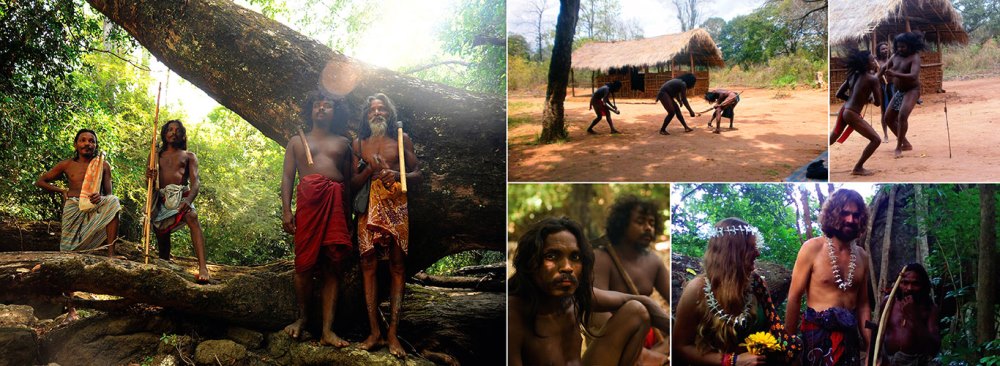
Veddas tribe in modern life:
There are now only about 500 genuine Veddas and they are all fiercely independent.
The 'Vedda' are so influenced by the imposing dominant culture that they risk losing their traditions and what has been their livelihood for centuries.
However they remain determined that their way of life will continue into future generations.
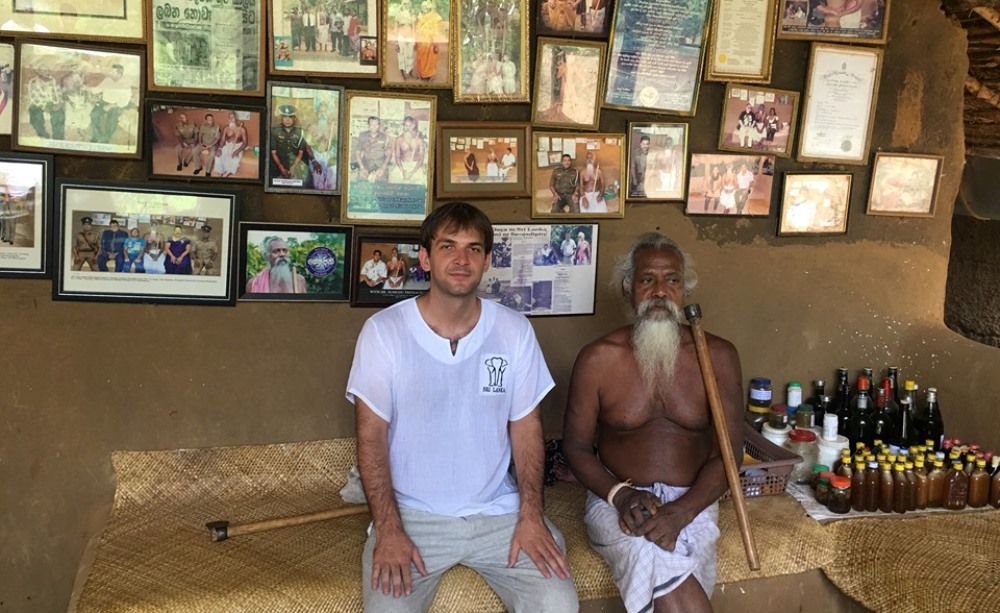
Visitors to this fascinating village have the opportunity to meet and chat with the people who live there, learn about their traditions, and gain a unique insight into their way of life.
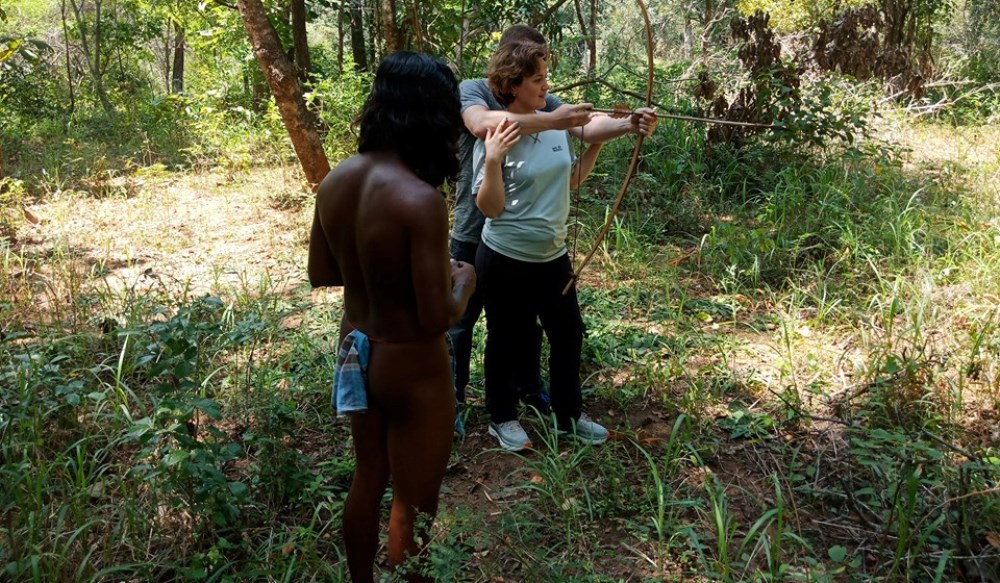

Interesting facts about Veddas:
- The religion of the Vedda tribes is animism. The Veddas of Singh follow the conjunction of animism and Buddhism, while Tamil Veddas preach animism in combination with folk Hinduism. One of the most distinctive features of the Veddan religion is faith in dead ancestors, called Nae Yaku. The Veddas, along with Buddhists, Hindu and Muslim communities, respectfully respect the temple complex located in Kataragama, showing this their attitude to the mixture of different religious and religious positions that took place over the 2000 years of coexistence and assimilation. Kataragama is believed to be the place where the Hindu god Skanda or Murugan married a local tribal girl, Valley, who in Sri Lanka is believed to have been a Vedda.
- Wedding of the Veddas is a simple ceremony. It happens like this: the bride, ties the waist of the groom with a rope from the bark, which symbolizes the bride's acceptance of the person as her assistant and partner in life. Marriages between cousins were the norm until recently, until Veddan women began to enter into alliances with Sinhalese and Mura. In Veddan society, women are on an equal footing with men. They are endowed with equal inheritance rights. Monogamy is a general rule, although there are times when a widow marries her husband’s brother in support and comfort (widow inheritance).
- The death of a fellow tribesman is also a simple matter without ostentatious funeral ceremonies - the corpse of the deceased is quickly buried.
With the beginning of the colonization period, the Vedda funeral ceremony has changed, now this happens without ostentatious funeral ceremonies, graves 4-5 feet deep are rummaged, the body is wrapped in cloth and covered with leaves and ground. Before burial, the body was placed between the trunks of the Gadumba tree. Personal property, such as a bow and arrow, a betel bag, were also buried. The corpse was aromatized, smeared with leaf juice. - Veddas believe in the cult of the dead. They believed that the spirit of the deceased pursues them, causing illness and misery. To appease the dead spirit, they call for the blessing of Nae Yakka, performing a ritual accompanied by the dance of Kiri Korahi.
Until recently, the Veddas' attire was very scarce. For men, it consisted only of a loincloth, and for women it was a piece of fabric worn from the navel to the knees. Today, men wear a short sarong, extending from the waist to the knees, and women in a garment similar to the Sinhalese Dlia-redda, which extends from the chest to the knees. - The Veddas cave paintings found in Hamangala testify to the high spiritual and creative vision achieved by the ancestors of today's Vanilla-Aetto. Most researchers agree that women painted who spent long hours in these caves waiting for their husbands to return from the hunt. These cave paintings have long served as visual aids and teaching tools to convey traditions and wisdom to future generations.
- The Veddas were originally hunter-gatherers. They used bows and arrows to hunt, and also collected wild berries and honey. Also, most Veddas are engaged in agriculture and fishing. The Veddas are known for their rich meat diet. Venison, meat of rabbit, turtle, monitor lizard, wild boar and monkey. Veddas kill only for food and do not harm young or pregnant animals. Fish are caught using the juices of certain plants as poison.

It is also worth mentioning the cooking of the Veddas. The most famous dish is the lizard's tail, filled with layers of fat and meat, fried on smoldering coals. Another delicacy is dried meat soaked in honey, often served as food during shortages.
In the olden days, the Veddas housing consisted of mountain shelters and caves. Today they live in wicker huts made from daubs and straw.
Excursion features
|
Tour cost
For a group of 1-3 people. 4-seater car
From Kandy - 265 usd
From Colombo and Negombo - 290 usd
From Bentota and Kalutara - 325 usd
From Hikkaduwa and Unawatuna - 365 usd
From Mirissa, Weligama - 385 usd
From Trincomalee - 290 usd
From Tangalle - 405 usd
+ surcharge of $60/person
For a group of 4-8 people. Minibus.
From Kandy - 295 usd
From Colombo and Negombo - 330 usd
From Bentota and Kalutara - 360 usd
From Hikkaduwa and Unawatuna - 400 usd
From Mirissa, Weligama - 430 usd
From Trincomalee - 340 usd
From Tangalle - 450 usd
+ surcharge of $60/person
*To clarify the cost from other locations, write or call us.
What is included. Entrance tickets
Included in price:
comfortable 4-seater car or minivan with air conditioning
gasoline, parking, toll roads
English-speaking driver
whole program with the Vedd tribe
Reviews about the organizer
15.03.2023
 Michael
Michael14.07.2022
I, as a professional wildlife photographer, traveled to Sri Lanka with some unusual requests. Igor helped not only to plan the route through the national parks and provided a very good driver, but also helped to find professional ornithologists in all the necessary locations.
We traveled to almost all national parks - Udawalawe, Minneriya, Yalu. We went to Sinharaja. There are many elephants and birds everywhere. Yala confirmed its reputation - here we managed to see leopards, however, unfortunately - very far away. I really liked Khabarana - the best place for shooting birds that you can find. We took a half-day ride to Wilpattu - a little-known park among tourists, which Igor recommended to me. The park itself is beautiful, comfortable, good paths, it is clear that they are taking care of it. You can definitely put it on a par with Yala. Unlucky to see leopards, but lucky to see Himalayan bears and giant squirrels. Of the minuses in Wilpattu - the complete absence of normal hotels near the park. I would not advise anyone to stay here overnight.
The rain spoiled the experience a bit. Complicated filming in Sinharaja. It is a pity that because of the rains it was not possible to shoot in the forests in the Kandy region. If you go to Sri Lanka for the sake of animals and national parks, you still need to take into account the season. But anyway, a huge thank you guys for organizing! With all the difficulties, it was thanks to them that we managed to squeeze the maximum out of this trip. Organization at the highest level - the guys will solve any problems, always in touch, find hotels in the right places at any time, organize transport, professional guides and ornithologists will prompt. Definitely 5+
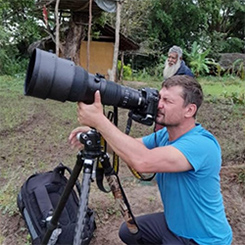 |
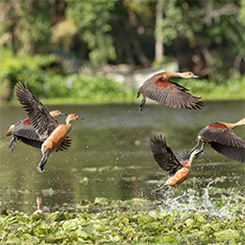 |
 |
 |
25.04.2019
Good afternoon, the tour went great. Very good guide, we will recommend you to all our friends. THANK YOU!
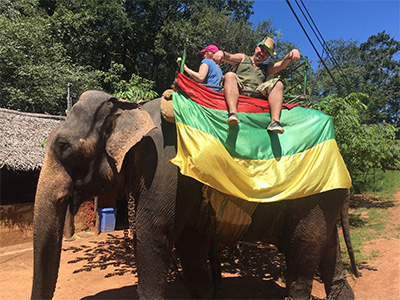 |
 |

